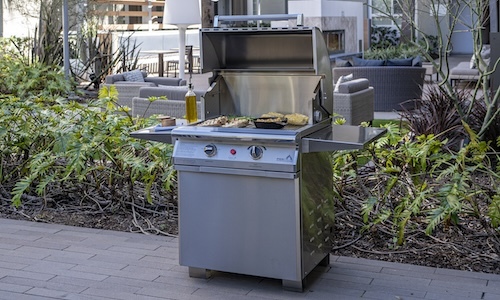5 minute read
|
PGS
Grilling is more than just a way to cook—it's a social ritual that brings people together. For multi-family properties like apartments and condos, installing a reliable patio barbecue can turn an outdoor area into a vibrant community space. In this guide, we’ll walk you through the different types of barbecues available, their key features, and why they are a great investment for property owners looking to enhance resident satisfaction and property value. A quality barbecue isn’t just about cooking; it’s about creating memorable experiences. For multi-family properties, having a durable and user-friendly barbecue system can make a big difference in how residents interact with each other and enjoy their living space. Whether it's a weekend gathering or a casual dinner, a well-designed barbecue can become the heart of the community. Natural gas barbecues are a popular choice for their convenience and consistent heat. They connect directly to a gas line, so there's no need to worry about refilling propane tanks. This makes them ideal for properties where natural gas is readily available, offering a clean and efficient grilling experience. Propane barbecues offer flexibility and portability. Since they run on fuel stored in a tank, they can be moved around as needed, making them perfect for smaller spaces or temporary setups. They’re also a good option for properties where installing a gas line might not be practical. Electric barbecues are a great eco-friendly alternative. They’re easy to use, require no fuel storage, and are often preferred in areas with strict building codes. Our electric models are built with stainless steel, ensuring durability and performance that matches our gas options. Our barbecues are made from high-quality materials like stainless steel and cast aluminum, both of which are known for their strength and resistance to weather damage. These materials ensure long-lasting performance, even in high-traffic multi-family environments. Stainless steel barbecues are not only sleek but also highly resistant to rust and corrosion. Available in three sizes, they are perfect for larger patios or as a central feature in a barbecue island setup. Cast aluminum barbecues are lightweight yet strong, making them easy to move and ideal for smaller spaces. They come in two sizes, allowing for flexible placement in shared outdoor areas. Our T-Series barbecues are designed specifically for multi-family settings, featuring essential safety and convenience elements: We offer multiple mounting solutions to suit different needs: Adding a barbecue to your property offers several advantages: Incorporating a high-quality patio barbecue into your multi-family property is a smart decision that benefits both residents and property managers. With a range of styles, sizes, and features, there's a solution for every outdoor space. Whether you choose natural gas, propane, or electric, our barbecues are built to last and deliver a great grilling experience. Enhance your property and create a welcoming outdoor area that residents will love. By understanding the needs of your residents, you can choose the right barbecue setup that not only meets their expectations but also strengthens the sense of community. Investing in durable and functional barbecues is a step toward creating a more connected and enjoyable living environment. Want more information? Have a question? Contact us today, and we will be happy to help! Sheeter Cylinder,Sheeter Cylinder For Perforation,Rotary Cutting Cylinder,Perforation Cutting Cylinder Jetfly High Precision Manufacturing Co.,Ltd , https://www.jetflytech.comUsing Patio Barbecues to Grill Your Favorite Foods: A Comprehensive Guide for Multi-Family Properties

The Importance of a Quality Barbecue
Types of Patio Barbecues
Natural Gas Barbecues
Propane Barbecues
Electric Barbecues
Material and Durability
Stainless Steel Barbecues
Cast Aluminum Barbecues
Key Features and Accessories
Mounting Options
Benefits for Multi-Family Properties
Conclusion
Using Patio Barbecues to Grill Your Favorite Foods: A Comprehensive Guide for Multi-Family Properties
Go Back To Blog